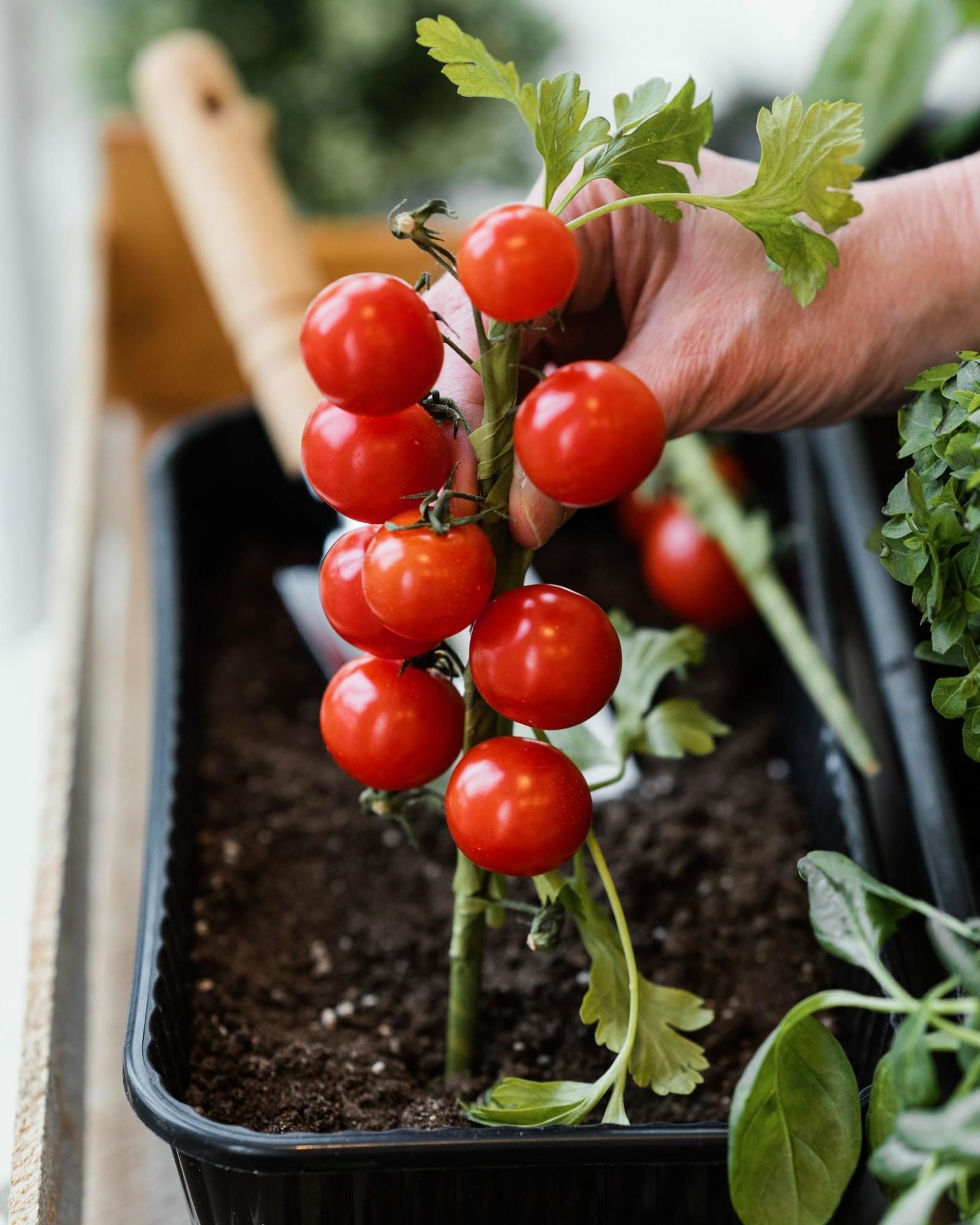
The fast and steady growth of cherry tomatoes places them among the most rewarding varieties to grow in various conditions. Due to their compact nature, this variety is especially suitable for urban cultivation, such as on terraces and balconies. However, for the plant to reach its full potential and yield a rich, healthy, and high-quality harvest, optimal growing conditions must be provided. Successful cherry tomato cultivation requires careful planning, proper care, and consistent monitoring throughout all stages of development.
Cherry tomatoes thrive in full sunlight, requiring at least 6–8 hours of direct sunlight daily. The ideal temperature for their growth is between 20 and 25°C. The soil should be well-drained, rich in nutrients, and have a pH level between 6.0 and 6.8. Before planting, it is recommended to enrich the soil with compost or manure to increase its fertility.
Cherry tomatoes can be sown directly in the ground or started indoors. If sowing indoors, seeds should be planted 6–8 weeks before the last expected frost. Seedlings should be transplanted outdoors once they reach a height of about 15 cm and the danger of frost has passed. When planting, it is recommended to space the plants 45–60 cm apart to allow enough room for growth.
Cherry tomatoes require regular watering, especially during dry periods. Watering should be done in the morning, directly at the base of the plant, to reduce the risk of disease. It is recommended to apply liquid fertilizers rich in nitrogen during the growth phase, while during flowering and fruit formation, fertilizers with higher potassium content should be used. Over-fertilizing, especially with high nitrogen content, can lead to excessive leaf growth at the expense of fruit formation.
The first fertilization should be done at planting by mixing the fertilizer with the soil around the roots. After that, the plants should be fertilized every 4 to 6 weeks during the growing season. During the flowering and fruit formation periods, fertilizers with higher potassium content, such as 5-10-10, are recommended to support fruit development. When applying fertilizer, avoid direct contact with the stem and leaves to prevent burns.
Due to its growth habits, cherry tomatoes require proper support. It is recommended to use stakes, cages, or wooden posts to direct the plant vertically. Pruning is also essential. Removing lateral shoots, also known as "suckers," promotes better airflow and directs the plant's energy towards fruit production.
Although cherry tomatoes are not highly susceptible to diseases, it is still important to monitor the plants for potential pest attacks, such as aphids, black flies, and tomato hornworms. Regular inspection of plants and the use of organic pesticides or natural pest control methods can help prevent and control these issues.
Cherry tomatoes are ready for harvesting when the fruits become fully colored and slightly soft to the touch. Regular harvesting encourages the plant to produce new fruits, extending the fruiting period. If the plant is not harvested on time, the fruits may become overripe and less flavorful.
Selecting the appropriate variety of cherry tomato is crucial for successful production, as different varieties have specific characteristics suited to particular growing conditions. Some varieties are more resistant to diseases and pests, while others are better suited to certain climatic conditions or soil types. For example, domestic cherry tomato varieties are known for their high yields and good disease resistance, making them a suitable choice for various production methods. Additionally, varieties with different fruit colors, such as yellow or black, can enhance the aesthetic value of the garden and increase the commercial appeal of the produce.
With proper soil preparation, careful planting, consistent care, and the selection of the right variety, cherry tomatoes can provide a rich, healthy, and long-lasting harvest. This plant, thanks to its resilience and compact growth, is ideal for both gardens and urban spaces. By following the recommended steps and regularly monitoring the plant's development, not only high yields but also quality, flavorful fruits can be ensured throughout the season.